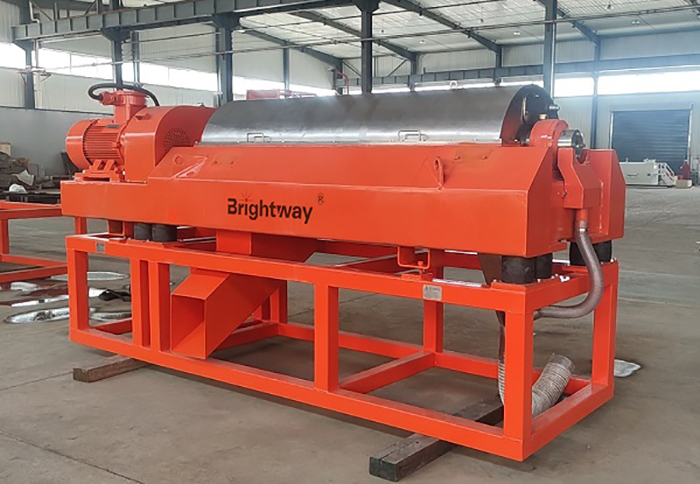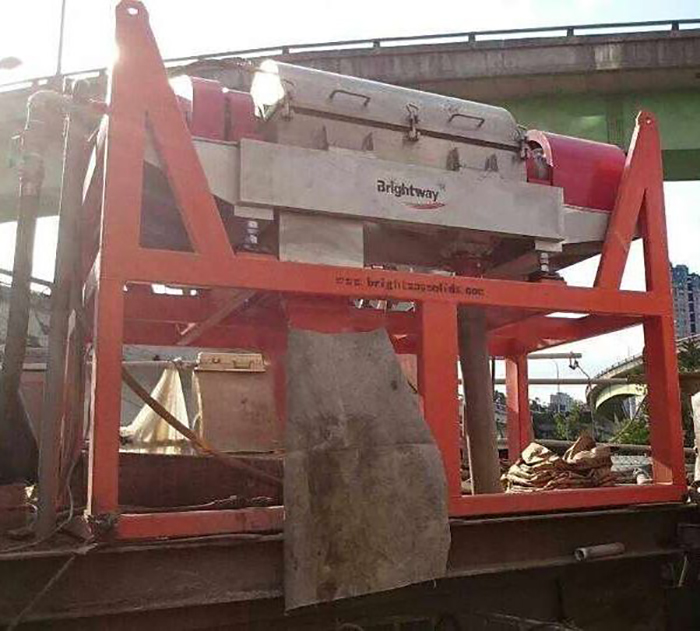In drilling fluid processing, centrifuges are often used to separate fine cuttings particles in drilling fluids, and are also used to recover weighted materials in drilling fluids such as barite. In addition, in the construction or municipal engineering industry, the drilling mud solids centrifuge can also be used as a sludge dewatering centrifuge. The specific principle is: the single machine has a large processing capacity and must be able to adapt to the harsh conditions.

The production of drilling fluid has three characteristics, which requires that the single-machine processing capacity of the drilling mud solids centrifuge should be large.
- Large amount of mud production: once the drilling rig is turned on, a large amount of mud can be produced in a short period of time; this requires a large processing capacity of the drilling mud solids centrifuge;
- Difficulty in storage: There is no large-volume mud pool on site, direct discharge will pollute the environment, and the transportation cost of vehicles is high, so on-site treatment is the best solution;
- Easy to separate: The solid phase and liquid phase of the mud have a large difference in specific gravity and are easy to separate. Therefore, a small aspect ratio should be used when designing a drilling mud solids centrifuge, and a large differential speed should be maintained during operation;

Drilling mud solids centrifuge are often installed on well sites, and the site environment is complex, which requires drilling mud solids centrifuges to be adaptable to harsh conditions.
- Resistance to wind and sun: the temperature of the site environment changes greatly, and there is a lot of dust in the air; this puts forward requirements for the performance of the centrifuge;
- Resistance to overload shock: the change of mud composition and the fluctuation of feed flow require the centrifuge to have enough power margin and perfect protection measures;
- Resistance to mud and sand wear: the solid phase particles (mud sand) in the drum are wearing various contact parts like a grinder, and these parts are required to have a sufficiently high resistance to wear;
- Resistance to electrical interference: high-power equipment on site frequently starts/stops, and arcs generated when various electrical equipment are running, resulting in large fluctuations in power supply voltage, and harmonic interference may cause instrumentation to fail;
- Resistance to wrong operation: construction workers’ education level is not high, the centrifuge should have fewer electrical operating parts, the operation should be simple, and the control program design should be fault-tolerant.

